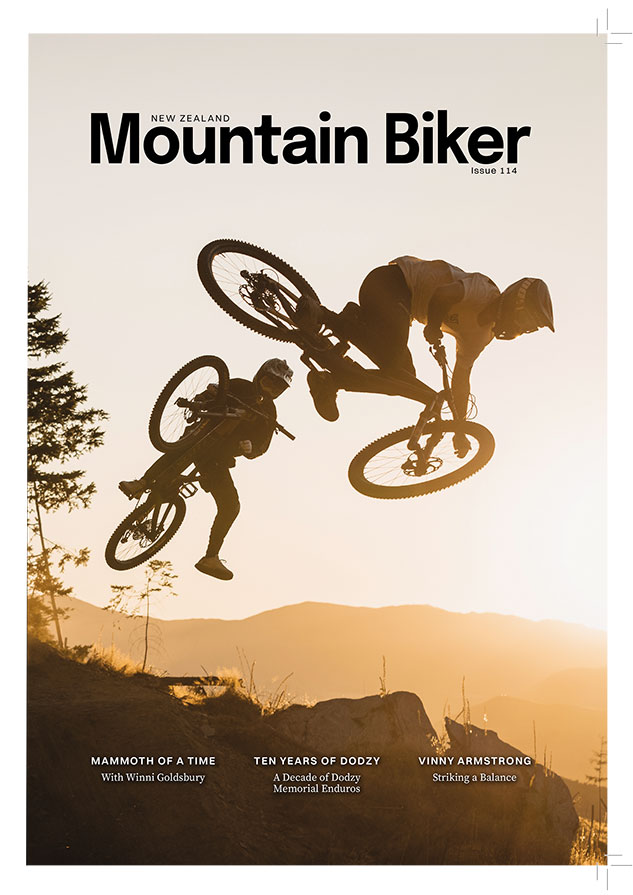Words & llustration Gary Sullivan
This morning, like every morning, I made a pretty decent cup of coffee with my little machine, then settled in to read the news while the caffeine kicked in sufficiently to allow me to complete a few puzzles.
The ‘news’ I read is not exactly mainstream, like most bike riders I suspect my browsing is fairly specialised.
One of my daily internet haunts featured a bike made by a UK company called Stooge, and the model was a Dirt Tracker.
After decades of looking at bike magazines and then bike websites, it can feel like most things have been said before, so it takes something unusual to make me click and dig in. A headline with the words Stooge and Dirt Tracker will do it, especially combined with an arresting image. In this case, a unique looking bike running single speed and packed for a tour.
Burrowing into the article was interesting. OK, the bike was interesting: a rigid-forked hardtail with big-ass tyres and swept-back moto looking handlebars, and a retro colour scheme. A neat combination of old-school detail like a biplane fork crown and a neat bend in the top tube was dovetailed with a modern build kit of drivetrain and brakes. A cool thing all around, if you like that kind of stuff, which I do.
More interesting was the story alongside, about the history of that moniker “Dirt Tracker” as it applies to the United Kingdom.
Everybody knows mountain bikes were spawned in pockets of the USA where pioneers hot- rodded old balloon-tyred bikes into what they called ‘klunkers’, right? OK. But much earlier, in fact not long after World War 2, gangs of British teenagers were hooning around on stripped- down one-speeds with cow-horn handlebars. They called these ‘trackers’ or ‘dirt trackers’.
They modelled their activities on motorcycle speedway, and the sport of bicycle speedway became a thing. It eventually caused quite specialised bikes to be designed for it but, in the early days, a basic bike with a coaster brake and home-made speedway- ish bars, was the machine of choice.
After decades of looking at bike magazines and then bike websites, it can feel like most things have been said before, so it takes something unusual to make me click and dig in.
In the article, there were some photos of these bikes, and even an ad for a model by Phillips that was ready for action straight out of the box.
What really got my attention was how similar these bikes were to what most New Zealand kids got around on when I was at school.
The bog standard bike you got – when you were lucky enough – had a steel frame, 26” wheels and a coaster brake. They had mudguards, a reflector on the rear, and goofy little handlebars with plastic grips on the end.
Flash ones had three gears, and complete tossers had bells and even lights run off a dynamo.
Turning your bike from this saccharine offering into something you could love was pretty easy: remove the mudguards and the chainguard, turn the handlebars skywards, or even upside down, until you could scratch up the $2.50 required to buy a set of cow-horns. Right around the time I was doing this stuff, more elaborate handlebars came along, and my personal choice was a set called Grasshoppers, which were mini ape- hangers. You could get tall ape-hangers too, and even sparkly banana seats, but they rendered the bikes less useful for what we did with them.
We were obsessed with speedway too, and sessioned the backyard oval. My version had a slightly downhill entrance into a very satisfying bend around the lemon tree, and a less enjoyable – but necessary – gentle uphill around the veggie garden, along the feijoa tree straight, and back into that downhill stretch. I must have cut hundreds of laps because, by the end of summer, there was a neat groove around that fast turn.
Down the road was our school, with several tarmac courses available around the deserted buildings after everybody had gone home. A bit further away, a couple of parks had places we favoured. But what really got us excited was field trips away from the three or four blocks of home turf where the gang lived.
Hauling the bikes up Mt Eden was the best.
We would ride and walk (maybe the reason they are called push-bikes) to the top of the hill, where there were a variety of routes back to the bottom via the extensive earthworks created by the first people to inhabit Maungawhau. The pits they made to store kumara could not have been better for getting airborne. Not really the ideal way to treat what are valuable archaeological sites of cultural significance – but we were twelve.
Is it any wonder that when mountain bikes happened I bought the first one I saw for sale?
Or that going out for a skid is still my favourite thing to do on a bike?
The image I scratched up for this edition is not my after-school bike, or the Stooge I started the column with. It is the current version of my Surly Krampus which shares concepts present in both of those others. OK, it’s running gears, but in most other respects it ticks the boxes: simple, rugged, and fun.


